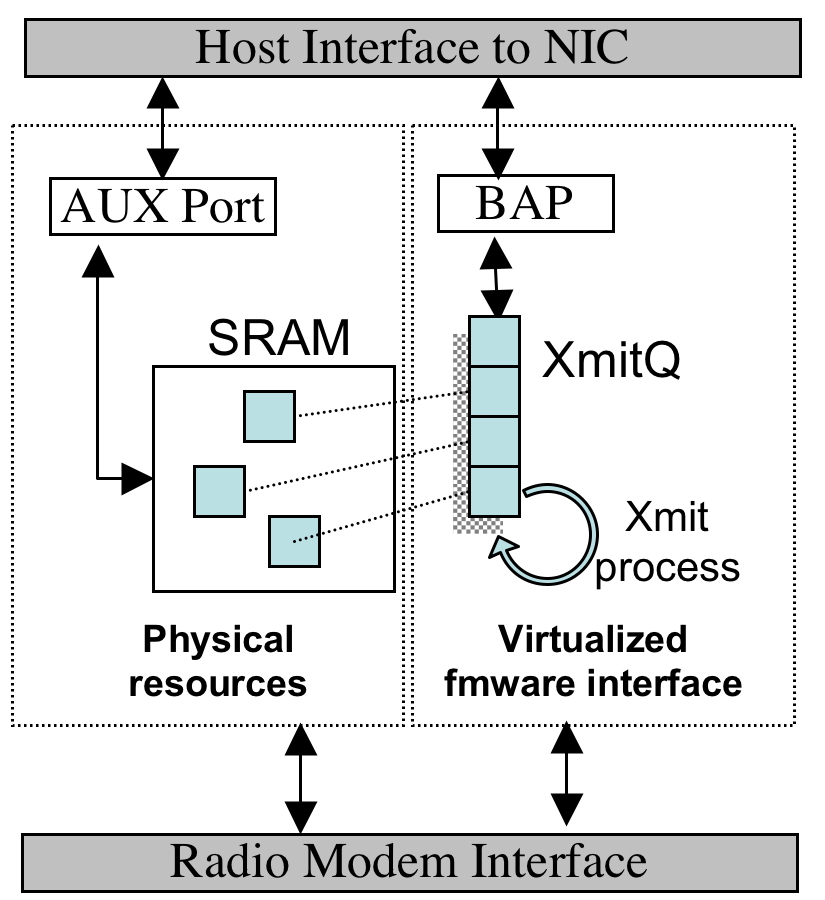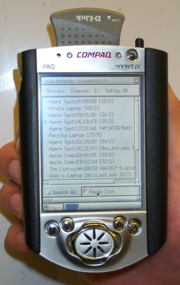
|
At first glance this appears to be a trivial problem since all 802.11 Network Interface Cards (NIC) are inherently able to generate arbitrary frames. However, in practice, all 802.11(a,b) devices we are aware of implement key MAC functions in firmware and moderate access to the radio through a constrained interface. The implementation of this firmware, in turn, dictates the limits of how a NIC can be used by an attacker. Indeed, in reviewing preprints of this paper, several 802.11 experts declared the virtual carrier-sense attack infeasible in practice due to such limitations.
In testing a wide variety of 802.11 NICs we have found that most allow the generation of management frames necessary to exploit the identity attacks described earlier - typically using semi-documented or undocumented modes of operation, such as HostAP and HostBSS mode in Intersil firmware. However, these same devices do not typically allow the generation of any control frames, permit other key fields (such as Duration and FCS) to be specified by the host, or allow reserved or illegal field values to be transmitted. Instead, the firmware overwrites these fields with appropriate values after the host requests that queued data be transmitted. While it might be possible to reverse-engineer the firmware to remove this limitation, we believe the effort to do so would be considerable. Instead, we have developed an alternative mechanism to sidestep the limitations imposed by the firmware interface. To understand our approach it is first necessary to understand the architecture of existing 802.11 products.

|
However, Choice-based MACs also provide an unbuffered, unsychronized raw memory access interface for debug purposes - typically called the ``aux port''. By properly configuring the host and NIC, it is possible to write a frame via the BAP interface, locate it in the NIC's SRAM, request a transmission, and then modify the packet via the aux port - after the firmware has processed it, but before it is actually transmitted. This process is depicted in Figure 3. To synchronize the host and NIC, a simple barrier can be implemented by spinning on an 802.11 header field (such as duration) that is overwritten by the firmware. Alternatively, the host can continuously overwrite if synchronization is unnecessary. In practice, this ``data race'' approach, while undeniably ugly, is both reliable and permits the generation of arbitrary 802.11 MAC frames. Using this method we are able to implement any of the attacks previously described using off-the-shelf hardware. We believe we are the first to demonstrate this capability using commodity equipment.

|
To experiment with denial-of-service attacks we have built a demonstration application that passively monitors wireless channels for APs and clients. Individual clients are identified initially by their MAC address, but as they generate traffic, a custom DNS resolver and a slightly modified version of dsniff [Son] is used to isolate better identifiers (e.g., userids, DNS address of IMAP server, etc). These identifiers can be used to select individual hosts for attack, or all hosts may be attacked en masse. The application and the actual device are pictured in Figure 4.
In the remainder of this section, we analyze the impact of the deauthentication attack and a preliminary defense mechanism, followed by a similar examination of the virtual carrier-sense attack and defense.
John Bellado 2003-05-16